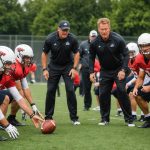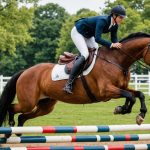Importance of Speed and Reflexes in Basketball Defense
Speed and reflexes are crucial elements in basketball defense, playing a defining role in a team’s overall performance. Speed allows defenders to close gaps quickly, making it harder for the offensive players to find open shots. The ability to move swiftly across the court ensures that defenders can respond to various gameplay scenarios efficiently.
In addition to speed, reflexes significantly impact how quickly a player can shift strategies and make decisions. Quick decision-making is essential when adapting to sudden changes initiated by the offense. For instance, when an offensive player attempts a quick drive to the basket, a defender with sharp reflexes can anticipate the move and position themselves to block the shot or interrupt the play effectively.
Additional reading : Top Advanced Shooting Drills for UK Basketball Players to Enhance Three-Point Precision
Research and statistics have shown a clear correlation between agility and defensive success. Teams with players demonstrating higher agility stats often outperform in defensive tasks, reducing the opponents’ scoring opportunities. Agility drills in training sessions are thus emphasized to enhance a player’s in-game reflexes and speed, directly contributing to better defensive outcomes. In essence, mastering both speed and reflexes provides a substantial advantage in maintaining a strong and dynamic basketball defense.
Understanding Speed and Reflexes in Defensive Basketball
In basketball defense, speed and reflexes are pivotal. These skills can be the difference between a successful steal and giving away an opportunity. Enhancing speed training and reflex improvement can significantly impact a player’s defensive capabilities.
Have you seen this : What are the key differences in coaching styles between NBA and European basketball?
A player’s ability to react quickly on the court is instrumental in intercepting passes, blocking shots, and maintaining pressure on opponents. Quick reactions can transform a potential threat into an advantage, shifting the momentum of the game. Whether it’s closing in on an attacker or recovering from a feint, effective reflexes ensure defenders remain a step ahead.
However, achieving breakthroughs in these areas often comes with challenges. Athletes frequently struggle with incorporating these basketball defense fundamentals into their training. The integration of speed drills and reflex exercises can initially be demanding, necessitating persistence and targeted practice.
To address these obstacles, players can benefit from structured speed training sessions, emphasizing agility and acceleration. Reflex-focused exercises, such as reaction ball drills, help sharpen their ability to respond to sudden changes in play. This dual approach is essential for holistic development, equipping athletes with the tools to enhance their defensive play.
Effective Drills to Boost Speed
To enhance your agility and speed on the basketball court, integrating speed drills and agility training into your routine is essential. These exercises, popular among UK Basketball teams, focus on improving quickness and movement efficiency.
Ladder Drills for Quick Feet
Ladder drills are a cornerstone of agility training, designed to improve foot speed and coordination. Using an agility ladder, players perform various patterns such as the one-foot hop, two-feet in each square, or lateral shuffles. These drills condition the lower body to move rapidly and efficiently.
Cone Drills for Directional Speed
Cone drills enhance your ability to change directions swiftly. Engaging in exercises like the “T-Drill” fosters directional agility, crucial for basketball manoeuvres. Set up cones in a T or L shape and sprint to each point, maintaining correct form and efficient movement pathways.
Sprints and Acceleration Workouts
Focus on sprints and acceleration to amplify speed. Form is pivotal during these exercises. Engage the core and keep the posture aligned to harness maximum propulsion. Recommended durations are short bursts of 20-30 seconds followed by brief recovery periods. Over time, incorporate variations like resistance bands or weighted vests for increased resistance.
To avoid common mistakes, ensure each action is executed with precision—rushing or improper technique diminishes benefits and heightens injury risks.
Effective Techniques for Speed Enhancement
Improving speed is not just about raw power; it involves a combination of speed drills, agility training, and plyometrics. By focusing on precision and efficiency, athletes can enhance their performance remarkably.
Agility Ladder Drills
Agility ladder drills are a cornerstone for improving foot speed and coordination. These drills provide a structured approach to advance your agility, enhancing both balance and rhythm. Some recommended patterns include:
- High Knees: Elevate each knee above hip height, increasing leg movement speed.
- In-and-Outs: Quickly step both feet into each square and then out, focusing on rapid transitions.
The versatility of agility drills allows for endless variations, challenging muscles differently and preventing workout monotony.
Plyometric Exercises for Explosiveness
Plyometric exercises are crucial for developing explosiveness, useful for athletes looking to enhance their quickness and power.Box jumps and depth jumps are particularly effective. Begin with lower heights, gradually increasing as your strength and control improve.
Safety considerations must not be overlooked. Ensure correct landing techniques and provide adequate rest periods to prevent injury.
Sprinting Techniques and Form
Mastering sprinting techniques involves attention to proper mechanics for optimal speed. Maintain a slight forward lean and focus on propelling your arms and legs effectively. Drills such as high-knee sprints and A-skips are excellent for refining mechanics and boosting explosiveness.
Conditioning Exercises for Enhanced Reflexes
To excel in basketball, reflex training and conditioning are vital. They sharpen your instincts and improve overall performance.
Plyometric Exercises for Explosiveness
Plyometric exercises are crucial for increasing explosiveness on the court. These exercises, such as jump squats and burpees, enhance muscle strength and agility, allowing players to leap and move swiftly. By incorporating plyometric drills into a regular routine, basketball players can significantly elevate their game.
Reaction Time Drills
Quick reaction time is essential in basketball. Dribbling drills with unpredictable changes in direction and speed, or using reaction balls, can fine-tune these reflexes. Enhanced reaction time leads to more successful defensive moves and better ball handling, providing a competitive edge.
Strength Training Focused on Core and Lower Body
Strength training targeted at the core and lower body plays a pivotal role in basketball conditioning. Exercises like deadlifts and planks develop stability and power, crucial for balanced muscle development. A strong core supports swift direction changes and endurance, while robust legs provide the power needed for sprints and jumps.
Recovery periods are equally important, ensuring muscle recovery and preventing injuries. By integrating these components into a well-rounded conditioning program, athletes can achieve superior reflexes and performance on the court. Through persistent effort and structured training, players can build a solid foundation for success in basketball.
Reflex Training Specific to Defensive Play
Reflex training is a critical component of improving defensive play, particularly through specialized reflex drills. These exercises aim to sharpen both cognitive and physical reaction times, preparing players to respond swiftly to dynamic game situations.
Reaction Time Drills
Reaction time drills are designed to enhance an athlete’s ability to respond quickly and effectively. These drills generally fall into two categories: partner drills and solo drills. Partner drills often involve elements such as quick passes or unexpected movements that necessitate fast decision-making. They mimic real game interactions, fostering an understanding of team dynamics. On the other hand, solo drills focus on personal speed and agility, offering the flexibility to tailor exercises to the individual’s specific needs.
Use of Visual Cues for Enhanced Reactivity
Incorporating visual cues can further boost an athlete’s reactivity. Visual stimulus training involves using tools like lights or signals to prompt game situation training scenarios, simulating real-life defensive play. This method encourages athletes to anticipate and react to unexpected changes, ultimately enhancing their defensive skills.
Real-Life Examples of Successful Reflex Training
Testimonials from athletes who have engaged in targeted reflex training illustrate its impact. Many report significant improvements in defensive play. For instance, a basketball player utilizing visual cues for defensive footwork noted increased agility and response accuracy. Such real-life examples underscore the effectiveness of these training methods in elevating defensive performance.
Training Methods for Defensive Situations
In basketball, honing effective defensive strategies is crucial for success, and comprehensive skill training can make a significant difference in performance. Training techniques are tailored not only to improve physical ability but also to enhance mental acuity during games.
One-on-One Defensive Drills
One-on-one drills sharpen individual defensive skills by focusing on agility, positioning, and anticipation. Players practice maintaining a strong defensive stance, reacting quickly to offensive moves, and learning the art of reading opponents’ intentions. These drills reinforce core skills that are essential for preventing the opposing team from scoring, developing both individual confidence and technique.
Team Defensive Strategy Simulations
Collaborative team exercises are pivotal in refining the collective defense mechanism. These simulations involve strategic positioning, role allocation, and real-time decision making, enabling teams to work cohesively. By participating in scrimmage games, teams can apply learned strategies in a controlled environment, improving communication and adaptability under game conditions.
Film Study for Defense Insight
Film study offers invaluable insights into defensive strategies, helping players understand play dynamics, anticipate opposition tactics, and improve performance. Reviewing game footage allows teams to dissect past performances, identify successful strategies, and uncover areas needing improvement. It bridges mental preparation with physical execution, aligning tactical understanding with on-court actions.
Experienced coaches often stress the importance of situational awareness and mental readiness as complements to physical training, providing a well-rounded approach to defensive preparation.
Integration of Techniques into Practice Routines
Incorporating speed and reflex drills into a training regimen can elevate an athlete’s performance significantly. To seamlessly blend these elements, it’s crucial to introduce drills progressively during practice sessions. Start with short, focused exercises that fit naturally within existing routines to avoid overwhelming the athlete. A consistent practice consistency approach allows for gradual adaptation, helping refine skills without compromising other areas of training.
Consistency plays a pivotal role in performance improvement. By regularly practising, athletes can hone their reflexes and speed, making these attributes second nature. Ensuring that training sessions are scheduled at regular intervals ensures that improvements are sustained over time. This approach not only prevents skill regression but also builds a robust foundation for further advancements.
Performance tracking is indispensable for measuring progress. Employing methods such as video analysis or wearable technology allows athletes to visualize their progress over time. With clear metrics, it’s easier to pinpoint areas needing adjustment, ensuring that each session is as effective as possible. Strategies for tracking include setting specific, measurable goals and periodic evaluations. This adaptability ensures that the training regimen remains challenging and tailored to an athlete’s evolving abilities. Regular adjustments keep the process dynamic and responsive, fostering continuous development.
Common Challenges and Solutions in Defensive Play
In the dynamic world of basketball, mastering defensive challenges is crucial to becoming a well-rounded player. Defensive play requires a unique combination of skill, strategy, and problem-solving. Common challenges can include issues like maintaining balance against a strong offensive player and reacting quickly to sudden changes in movement. These challenges can often stem from a lack of conditioning or inadequate defensive training, which many players face during intense game situations.
To effectively handle these defensive challenges, basketball skills such as footwork, anticipation, and spatial awareness must be honed. Practicing agility drills can immensely aid in improving footwork, while game simulations can foster anticipation skills, allowing a player to predict the opponent’s moves. Incorporating regular strength and conditioning sessions can also enhance overall defensive resilience, enabling players to maintain their guard over extended periods.
Top athletes share that mental preparation is as vital as physical readiness. Techniques like visualisation and mindfulness help players stay focused and adaptable during play. Additionally, team communication is an essential component of overcoming defensive challenges. Coordinated defensive strategies allow teams to effectively thwart opposition plays, making them a formidable force on the court.
The Science Behind Speed and Reflex Improvement
In basketball, speed and reflexes are crucial for optimum performance. Understanding biomechanics plays a vital role in enhancing these abilities. Biomechanics involves the study of the body’s movements and their efficiency. This science is employed to optimize athletic performance by examining factors like body alignment, joint movements, and muscle activity. Effective training programs utilize biomechanics to improve speed, ensuring that athletes move efficiently by maximizing power and minimizing energy waste.
Physiological Adaptations from Training
Training science heavily relies on understanding physiological principles. Muscle adaptation is a key component, where muscles strengthen and increase in endurance through consistent training. This adaptation enhances performance, allowing players to move more swiftly on the court. Moreover, the importance of recovery cannot be overstated. Recovery periods are integral to speed training as they prevent overtraining and allow muscles to repair and grow stronger. Incorporating adequate rest leads to better gains and sustains high performance levels.
Latest Research on Effective Training Techniques
Recent studies focus on innovative approaches to boost speed and reflex training. Advanced training techniques incorporate both biomechanical and physiological principles. Research suggests agility drills, plyometrics, and resistance training as effective methods. These studies provide practical takeaways, highlighting the need for tailored training regimens focusing on individual capabilities. By applying such scientifically-backed strategies, athletes can effectively improve their speed and reflexes.
Additional Resources and Tools
To refine skills and enhance performance in basketball, exploring additional resources and tools can be invaluable. These resources provide fresh insights and methodologies, complementing traditional training approaches.
Recommended Training Videos
Training videos offer visual insight into successful defensive techniques. Coaches and trainers often produce these resources to address common challenges and share expert coaching tips. Videos focusing on basketball tools like footwork and positioning can be especially beneficial. Opt for content reviewed positively for not only explaining but demonstrating concepts effectively can lead to improved understanding and execution on the court.
Useful Apps for Tracking Progress
Technological adaptability is vital for assessing and improving basketball skills. Apps focusing on tracking player progress offer personalized data analysis, aiding continual improvement. These tools assist in monitoring performance metrics, setting training goals, and devising better practice schedules. Look for apps acclaimed for their user-friendly interfaces and actionable insights.
Books and Articles by Experts in Basketball Defense
Renowned experts have authored numerous books and articles providing in-depth perspectives on basketball defense. These resources can supplement physical training by offering detailed strategic discussions and new defensive theories. Continual learning through reading can lead to significant adaptability and understanding of the game’s evolving nature. Prioritize materials praised for their comprehensive analysis and practical applications.











